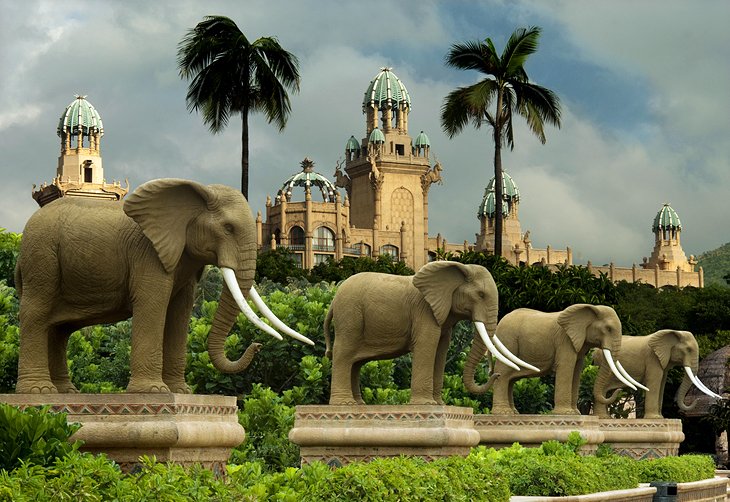Some Known Incorrect Statements About Johannesburg North Attractions
Some Known Incorrect Statements About Johannesburg North Attractions
Blog Article
Getting My Johannesburg North Attractions To Work
Table of ContentsJohannesburg North Attractions Fundamentals ExplainedThe smart Trick of Johannesburg North Attractions That Nobody is Talking AboutIndicators on Johannesburg North Attractions You Should KnowHow Johannesburg North Attractions can Save You Time, Stress, and Money.Not known Details About Johannesburg North Attractions Johannesburg North Attractions - The Facts
The city grew on the edge of the Witwatersrand Key Reef, a below ground stratum of gold-bearing quartz-silica corporation that arcs for hundreds of miles underneath the Highveld - Johannesburg North attractions. Most of the gold mines in the city stopped operation in the 1970s, however in its day the Witwatersrand gold industry accounted for even more than 40 percent of the world's yearly gold production.Johannesburg has a temperate environment. Summer temperature levels balance about 75 F (24 C); wintertime temperatures average regarding 55 F (13 C) and only periodically dip listed below freezing. The city delights in concerning eight hours of sunshine each day in both winter and summer season. Rain averages regarding 28 inches (700 millimetres) per year, yet the overall varies considerably from year to year.
What rain the city receives falls virtually solely in the summertime, commonly in magnificent late-afternoon electrical tornados. Air air pollution poses a substantial trouble, specifically in the cold weather, when thermal inversions restrain the westward circulation of air from the Indian Sea. Air pollution is most extreme in the densely settled Black townships on the city's perimeter, where lots of residents still count on coal for fuel.

Indicators on Johannesburg North Attractions You Need To Know
The equilibrium of the city is occupied by whites. Lodging varies in personality and quality.
Physical development, although rather limited by transport, proceeded rapidly as migration to South Africa, and Johannesburg in particular, boosted considerably.
Many bad suburbs were mixed, with bad blacks and whites living with each other, although the wealthy residential areas were usually scheduled for whites.
The number of individuals living in the internal city on an informal basis is unidentified, as many are unlawful immigrants. The unemployment, education, and age profiles of the location are all unknown, due to the trouble of acquiring reputable information regarding the location.
Fascination About Johannesburg North Attractions
Centred on the CBD, the region includes the suburbs of Yeoville, Bellevue, Troyeville, Jeppestown, and Berea to the eastern. To the west it infects Pageview (Johannesburg North attractions) and Fordsburg. visit their website There are small industrial parks to the south, such as City West-Denver and Benrose. Around 800,000 commuters pass with the central city every day, and it works as a regional shopping node for visitors from the southerly suburban areas. Yeoville and Bellevue have a mix of apartment or condo structures and solitary residential systems on tiny great deals. The area is located on a mountainous divide that runs from eastern to west.

4 Easy Facts About Johannesburg North Attractions Described
The eastern suburban areas are some of the oldest locations of Johannesburg, there are huge areas of Jewish and various other European histories, the bulk of the population is English talking. There are three golf training courses as well as a number of safeguarded additional hints ridges with viewsites.
The area is primarily composed of old "matchbox" homes, or four-room homes constructed by the federal government, that were built to supply low-cost lodging for black workers during apartheid. Soweto is an acronym, standing for "South Western Townships". Road after road in this field is lined with matchboxes; nonetheless, there are a couple of smaller areas where prosperous Sowetans have built residences that are a lot more comparable in stature with those in more wealthy suburbs.
Hostels are another noticeable physical feature of Soweto. Initially developed to house male migrant workers, several have actually been improved as dwellings for pairs and households. The N1 Western Bypass skirts the eastern limit of Soweto. The residential area was not traditionally enabled to create employment centres within the location, so nearly all of its locals are travelers to various other components of the city.
Some Known Details About Johannesburg North Attractions
The N1 Western Bypass attaches the northern suburban areas with the north-western suburbs. The suburbs in the northern residential areas are primarily official, without any significant areas of informal housing, or housing that does Going Here not have a long-term structure. This is a well-known area, there is a fad of land use change from household to industrial, specifically along main arterial roads and around well-known nodes.
Roads to the east and west are less well developed, as there are no highways taking a trip in that direction. In the direction of the northern boundary of the city, the thickness of advancement lowers, leaving big locations of undeveloped land around Midrand.
The Greatest Guide To Johannesburg North Attractions
, which is located on a hill neglecting the inner city and Hillbrow.
Report this page